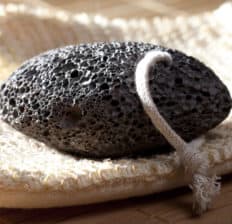Fact Checked
This Dr. Axe content is medically reviewed or fact checked to ensure factually accurate information.
With strict editorial sourcing guidelines, we only link to academic research institutions, reputable media sites and, when research is available, medically peer-reviewed studies. Note that the numbers in parentheses (1, 2, etc.) are clickable links to these studies.
The information in our articles is NOT intended to replace a one-on-one relationship with a qualified health care professional and is not intended as medical advice.
This article is based on scientific evidence, written by experts and fact checked by our trained editorial staff. Note that the numbers in parentheses (1, 2, etc.) are clickable links to medically peer-reviewed studies.
Our team includes licensed nutritionists and dietitians, certified health education specialists, as well as certified strength and conditioning specialists, personal trainers and corrective exercise specialists. Our team aims to be not only thorough with its research, but also objective and unbiased.
The information in our articles is NOT intended to replace a one-on-one relationship with a qualified health care professional and is not intended as medical advice.
December 28, 2022
(114)



You know those stones that are commonly used during pedicures to exfoliate your feet? They’re called pumice stones, and they serve as natural skin buffers. The pumice stone is actually an ancient skin care tool for removing dead skin cells and providing an even, more youthful appearance.
Today, you can purchase your own pumice rock and use it during your skin care routine to exfoliate, remove unwanted hairs and keep your complexion looking fresh.
What Is a Pumice Stone?
A pumice stone is a porous, abrasive stone that’s used to remove dry, dead skin. It forms when lava and water mix.
As the lava cools, it creates the unique texture of the pumice stone that makes it an excellent exfoliator with natural pores from air bubbles. In fact, these stones have been used to smooth skin for over 2,000 years.
You can buy a pumice stone online or in some stores containing beauty products. The ideal pumice stone for you will fit into your hand comfortably and have the right-sized pores.
Larger pores are better for callused or very thick, rough skin. Smaller pored stones are ideal for dry but more sensitive areas, like the knees or elbows.
Benefits
1. Exfoliates Skin
The pumice stone has been proven to be helpful in removing hyperkeratotic tissue, which is excess or thickening skin on the outer layer. When used to scrub the skin, while wet and sometimes with soap, it effectively exfoliates the skin and removes dead skin or calluses.
It can also be used for skin corns and plantar warts. It can be used on the face and neck, but opt for a stone with smaller pores that are less abrasive. For thicker areas, like the feet, larger holes may be more effective.
You can also add pumice stone exfoliation to a DIY detox foot soak. (Another excellent way to naturally exfoliate the skin is dry brushing.)
2. Removes Skin Stains
Using pumice stone to cleanse the skin is an excellent way to remove stains without the need for harsh chemicals. If you’re a painter or get skin stains from a hobby or occupation, using a pumice stone to exfoliate the area can help remove the stains naturally.
3. Removes Unwanted Hairs
Pumice stones can be used to remove unwanted or excess hairs. This isn’t ideal for sensitive areas, but it’s effective for removing hairs from forearms, shins and other areas of thicker skin.
READ RELATED: Benefits of Castor Oil for Hair Growth (and More)
Use a stone that has smaller holes, and soak the area in warm water for about five minutes before using the stone.
How to Use
When using a pumice stone to exfoliate, you want to stick to thicker skin areas and calluses. The abrasive texture of the stone can be too harsh on delicate areas, such as the face, and can lead to microabrasions.
Instead, use it on the soles of the feet, hands, knees, elbows and any other area of skin thickness or roughness.
If you’re dealing with dry, thick or callused skin, here’s a step-by-step guide to using a pumice stone for smoother skin:
1. Wet the Area
The pumice stone works well on wet and even soapy skin.
To prep the area, soak it in warm water for three to five minutes. This will make dead skin cells easier to remove and even increase penetration when using the stone.
For really rough areas, add a gentle soap to the area before using the stone. This can also be done while showering or in the bath.
2. Gently Exfoliate
Now that the skin is prepped with some warm water and maybe some soap, it’s time to start exfoliating. Move the stone in circular motions, starting with light pressure and increasing gradually until you see that it’s removing the excess skin.
You’ll notice that the dead skin cells actually build up on the stone as they’re removed from your skin.
Once you’ve achieved your desired smoothness, you can stop exfoliating. This usually takes just a few minutes.
3. Dry the Area
This may seem obvious, but after exfoliating, gently towel dry your skin. Don’t be too rough with the area because it may be sensitive, so pat drying is ideal.
4. Moisturize
This step is really important, so don’t skip it.
After drying your skin, apply a thick layer of moisturizer. This can be a chemical-free lotion or cream or a carrier oil like coconut or jojoba.
This will help seal the fresh skin and heal any microabrasions that may have occurred while exfoliating.
5. Clean the Stone
To avoid the buildup of bacteria and fungus inside your stone, it needs to be cleaned after every use.
Clean it with soap and water, and use a bristled brush. Then let it dry completely.
Store it away in a clean place until the next use.
Aftercare
Taking care of your skin between pumice stone uses is important. Right after exfoliating with a stone, dry the area, and add a gentle moisturizer.
In the days after use, keep moisturizing with a chemical-free cream or hydrating oil, like jojoba, olive or coconut oils. It may also help to use a keratolytic agent in between pumice stone uses, such as creams containing salicylic acid.
Cleaning your stone properly is also very important. If it’s left unclean, it becomes a home to bacteria and can lead to skin infections or irritations.
Simply use soap and water to clean the stone and inside the pores. Then let it dry completely before storing it away.
Risks and Side Effects
Exfoliating with a pumice stone may cause skin irritations, especially to sensitive areas. It may also cause small abrasions if it’s not done gently.
It’s best to start with less sensitive areas, like the heels of your feet.
If you’re using a stone on your face, go for one with smaller holes, and do it very gently. If you experience redness or skin irritation, stop using the stone.
Final Thoughts
- The pumice rock or stone is an age-old remedy for hair removal, removing dead skin cells and getting rid of skin stains.
- The pumice stone for body care is an excellent tool for exfoliating naturally and pairs well with a foot scrub.
- Using the stone is simple, soak the area in warm water, and then rub the stone in a circular motion to reduce excess skin. Afterward, add a gentle moisturizer, and wash your stone thoroughly.
!function(f,b,e,v,n,t,s)
{if(f.fbq)return;n=f.fbq=function(){n.callMethod?
n.callMethod.apply(n,arguments):n.queue.push(arguments)};
if(!f._fbq)f._fbq=n;n.push=n;n.loaded=!0;n.version=’2.0′;
n.queue=[];t=b.createElement(e);t.async=!0;
t.src=v;s=b.getElementsByTagName(e)[0];
s.parentNode.insertBefore(t,s)}(window, document,’script’,
‘
fbq(‘init’, ‘3475171552810057’);
fbq(‘track’, ‘PageView’);




